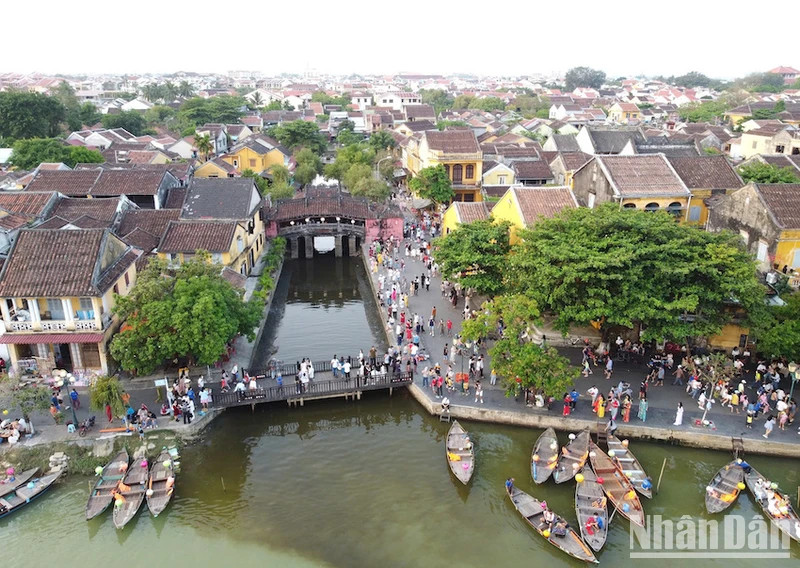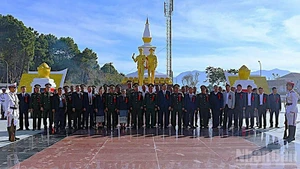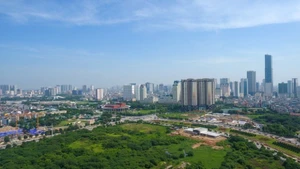From desolation to world-famous heritage city
On March 28, 1975, the army and people of Hoi An rose up together, defeated the enemy’s strongholds, and took back the entire city. This event was not only a source of pride for the people of Hoi An but also contributed to the victory of the Spring of 1975, reunifying the country.
The years of resistance left behind huge losses. Hoi An was then desolate and ruined with thousands of wounded soldiers, martyrs and the wounds of war deeply engraved in the hearts of the people. However, with a resilient spirit, the cadres and people of Hoi An quickly began the reconstruction work, gradually reviving their homeland from the ashes.
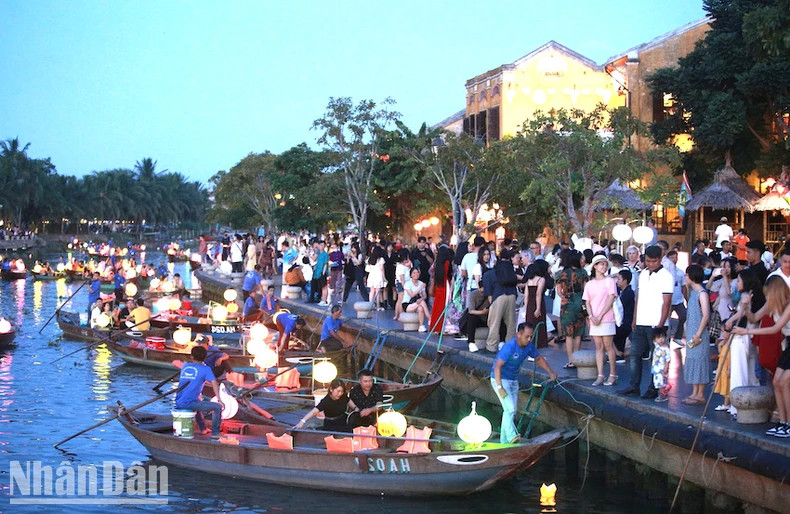 |
| Tourists participate in releasing flower lanterns on the Hoai River (Hoi An). (Photo: Dinh Tang) |
In the days after liberation, Hoi An people faced many difficulties: food shortages, scarce jobs, and destroyed infrastructure. In the early years, the administration and people of Hoi An implemented a series of measures to restore production and stabilise life. Fields were reclaimed, cooperatives were gradually formed, and traditional crafts such as weaving and rattan weaving were restored to create jobs for the people.
A major turning point came to Hoi An in the 1990s when the country entered a period of Doi Moi (Renewal). Realising the potential of the ancient town with its invaluable cultural values, Hoi An chose the path of sustainable tourism development. The conservation policy associated with economic development has helped Hoi An gradually transform. In 1999, UNESCO recognised Hoi An Ancient Town as a World Cultural Heritage, opening a new chapter for this land.
Hoi An - a model of sustainable development
Today, Hoi An is not only a leading tourist destination in Vietnam but also a model in preserving and promoting cultural values. Every year, the city welcomes nearly 5 million visitors, of which 70% are international visitors. The ancient quarters with moss-covered roofs and small alleys bearing the mark of time have become an irresistible attraction. Traditional festivals are held regularly, helping visitors understand more deeply about local culture.
In addition to tourism, Hoi An’s economy has also undergone strong changes. From a poor land after the war, the city’s budget revenue has now reached nearly 1.8 trillion VND per year, thousands of times higher than 50 years ago. Notably, since 2017, Hoi An has had no more poor households, demonstrating the comprehensive development of this land.
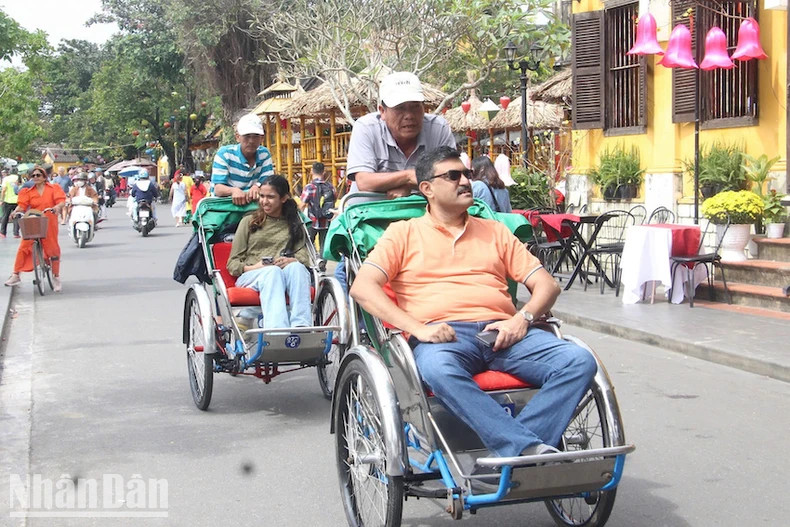 |
| Tourists visit Hoi An by cyclo. (Photo: Dinh Tang) |
However, despite its remarkable achievements, Hoi An still faces many challenges. Pressure from a large number of tourists poses the problem of conservation and sustainable development. Climate change and rising sea levels are also threatening coastal areas and the Hoai River. In that context, Hoi An is focusing on building an ecological city, minimising environmental pollution, and promoting green tourism models.
A notable point is that Hoi An will no longer be a district-level administrative unit according to the policy of restructuring the state apparatus. However, the name Hoi An and the cultural and historical values of this land will forever remain, not only in the hearts of the people but also on the international tourism map.
Looking back on the 50 years since liberation, Hoi An has undergone a spectacular transformation. From a land devastated by war, now a world-famous heritage city, Hoi An is a testament to the spirit of resilience and adaptability to the times. Today's achievements are a solid foundation for Hoi An to continue to rise, maintaining its position as the most attractive destination in Vietnam and the world.
